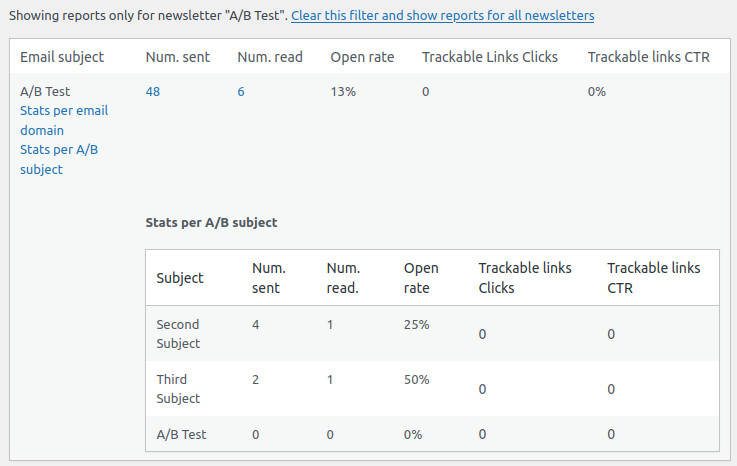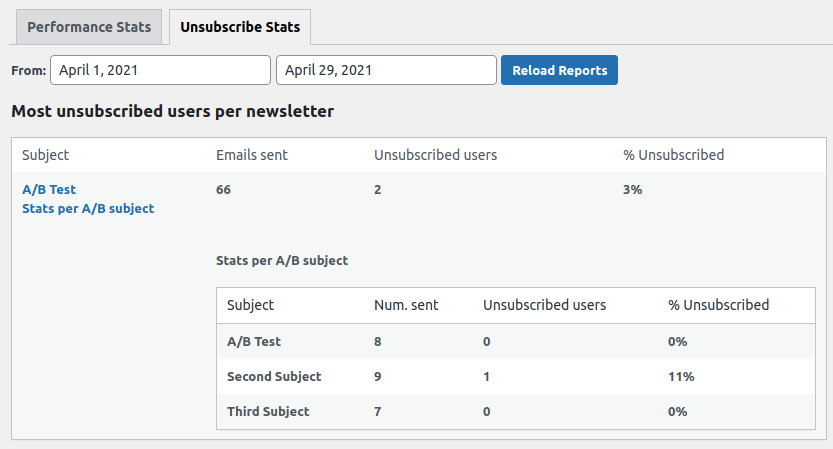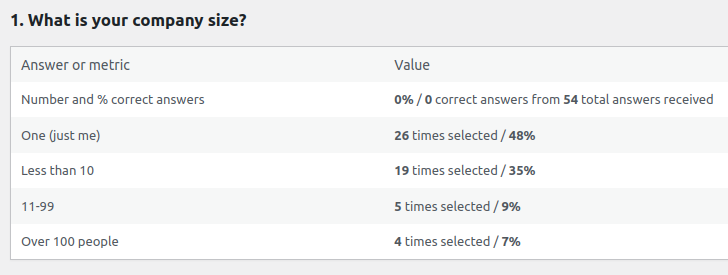Quick links: Personality Tests | Knowledge Tests | Quizzes for Marketing | Chained Quizzes | Surveys | Lead Generation
It’s always a good idea to get the most out of your investment. (If you have purchased or planning to purchase a versatile quiz software like WatuPRO you may want to think about all the possible use cases of it.)
The utilization of tests and quizzes on your site can lead to many positive outcomes like:
- Higher user engagement
- More social network promotion and inbound links
- Collecting useful data that then can be used to create high-quality linkable content
- Gaining insights about your site visitors
- Direct monetization by selling paid tests, certifications, online education
- Gains on the marketing front – quizzes are super powerful interactive method of promoting products
- And a lot more.
But let’s be a bit more specific and see how you can actually achieve this. There are various use cases of running a software for tests or surveys. Let’s elaborate:
1. Personality Tests
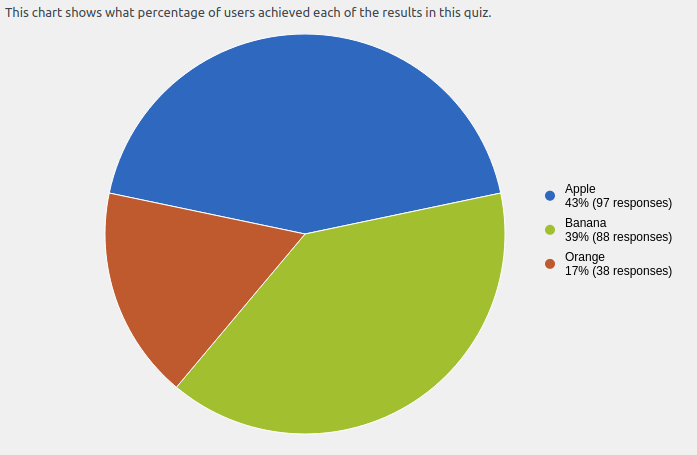
Usually the first thing that comes to mind when someone mentions “quiz”. See a very simple example of a fun personality quiz here.
These quizzes are used mostly in psychology with the idea to identify the user’s personality: are you shy or communicative, what is the best career for you, which country should you live in, and so on.
Personality quizzes range from… well, just dumb and funny, to very serious psychological tests like Myers/Briggs type indicators. (And yes, WatuPRO is capable to create such tests. Learn how here).
Personality tests typically cause a lot of sharing on social networks because people like to talk about themselves and share their results. If done well, these quizzes often lead to a good inflow of external links to your site – which is excellent for SEO.
They also give you amazing opportunities to promote products related to the results on the quiz. Super powerful.
If you are interested to create high quality personality test(s) on your site (or why not a whole site with such quizzes), let me help you with some ideas:
Take a break. We have a lot more to cover.
2. Knowledge Tests
Knowledge exam
The largest part of the customers who have purchased our plugin are using it for knowledge tests (this is not a surprise considering it has the most elaborated grading system in the WP world). And that’s probably the largest part of tests created in general.
Knowledge tests evaluate user’s knowledge or competence in various areas by assigning points to the correct answers of the questions. Although you could evaluate test based entirely on correct/incorrect answers, usually you would want to give more weight to some questions or answers. For this using points for your grading, or the percentage of points collected vs. maximum possible points could be more precise way of grading.
There are limitless ways to grade a knowledge exam: from passed/failed, to ABCDEF, numeric systems, and so on.
Knowledge tests are super powerful and can be used in many ways:
- In online education – either alone of in conjunction with an LMS. For example WatuPRO is integrated in the free Namaste! LMS in a way that lessons can require a selected exam to be completed in order to continue.
- All kinds of certification. Completing a test or tests can be considered a qualification for certain knowledge and even lead to issuing printable certificate.
- In human resources / by recruiters. Knowledge tests are often the most important part of work interviews.
- For lead generation. You can pre seed customers for various products based on their knowledge. See some ideas here.
- For providing a proper offer. For example financial service companies are often required to examine their customers in order to qualify them for some regulated services.
With a good quiz tool you can create very elaborate knowledge tests including different types of questions: single-choice, multiple-choices, free text answer questions, slider/rating, match/matrix, sortable questions, “fill the blanks”… This way your test will not only be very engaging but will also provide solid grounds for robust grading.
The more elaborated tests usually have questions in different categories and often provide results per category along with charts and a “final grade”.
3. Using Quizzes for Marketing
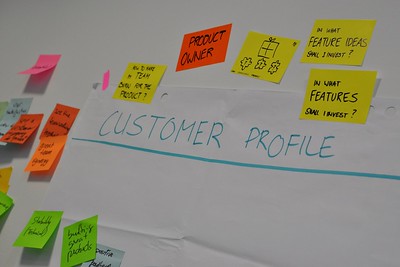
Photo by diego.rendeiro
While quizzes are good for marketing per se (already said: more engagement, social sharing, inbound links!), there is a very powerful way to get the most of the two types of tests listed above. It is to offer a related product or service based on the test result.
It doesn’t matter if you are building a fun quiz, a knowledge assessment, or a survey: you can always have a “result” that will invite the respondent to check a product, to receive a free report, to sign up for a newsletter, and so on. It’s very likely that you are reading this article because you have signed up for our newsletter after taking one of our demo quizzes!
Quizzes let you target your marketing offering based on the responses of the quiz taker. The “grades” (results) can be used to include specific targeted offers. Examples:
- A personality quiz can refer the people to a book/video/webinar/education based on the type of personality they received. A shy person can be offered a course for building confidence, while someone highly extrovert can be offered a completely different product.
- A knowledge test can offer the respondent further education for beginners if they don’t score well and an advanced course if they got a good result.
- A survey can suggest products or services directly depending on the interest expressed by the user.
- A test that scores different categories of questions can list different offerings for each category depending on how the user performed.
- And so on… use your imagination.
The focus here is that you are having a way to provide a really targeted offer. Much more targeted than compared to someone who is just reading an article on your site – when you don’t know for sure what exactly their intent, needs and interests are.
Now, if you combine a targeted offer in the quiz with a targeted advertising campaign, for example in Google Ads… it’s possible to get very strong results.
4. Chained Quizzes
This is a very specific type of quizzes where the next question depends on the answer of the previous question. Why is this so important? Because it allows you to give individual experience to each of your respondents instead of giving them the same questions.
Such a quiz can work as an interactive landing page for any marketing campaign or direct product sales. Users are a lot more likely to follow your call to action when you are presenting them targeted options depending on their previous answers.
Speaking about WordPress, Chained Quiz is probably the only plugin capable of doing this along with WatuPRO. Give it a try, it’s amazing how much this can increase your conversions.
Of course, there is also the option that you chain whole tests. Typically you would do it with tests that are just a few questions long. At the end of each quiz you can offer the next one depending on the achieved result/grade. If your quiz software supports automated redirection, this may happen automatically and the user may not even notice they are taking multiple tests.
Chaining quizzes can be useful in education too. Creating dependencies – when one exam can be accessed only if the previous one is completed successfully – may help gradual learning and certification.
5. Surveys

Photo by GotCredit
Surveys are a huge matter. If you are not running at least one survey, you should. Here is why:
- Surveys give you super useful insights – who are your visitors, what are they looking for, what products or services they are interested in, what you can offer them.
- Surveys are an excellent source of genuine data for research content. Regardless of what kind of a site you run: good, high quality content attracts links, search engine love, traffic, and sales. One of the easiest ways to collect real and unique data that can be used for creating a high quality research content is by running surveys. Instead of rehashing information found online, collecting data from your site visitors will give you something real to base your content on.
- Surveys are an excellent source for visualizations. You already know that infographics are one of the most powerful and attractive forms of content online. The usual problem with creating them is having data. Well, surveys will give you data. Cheap and fast. Even a simple chart generated by your survey plugin can have a really big impact over how your content is liked, shared, and linked.
You can go even further with surveys and run data science reports like cross-tabulation analysis both for your own use and for publishing various conclusions.
If you are looking for good tips for creating successful surveys, check out this page.
6. Use Questionnaires For Lead Generation
Although we partly covered this above, lets focus a bit more on this super important topic. How you can actually get the most of a quiz to generate leads?
- Lead the respondent to an individualized offer. Just like you would do if you are selling a product: don’t send everyone to the same newsletter or auto responder series. Use the quiz result / grade to point the user to a laser focused marketing campaign.
- Pre-qualify leads. If you are offering something that requires specific knowledge, or demography, location, etc, you can use a quiz or survey to pre-qualify your leads and not waste money on those who won’t convert.
- Use for engagement. Someone who completed a relatively long quiz is a lot more likely to continue paying attention to what you have to offer. You know that once they have invested their time, they are also more likely to continue to invest in your knowledge, products, or services – and that means both time and money.
The primary reason why quizzes and surveys are so effective for lead generation is that they are converting users who already shown interest. So after pre-qualifying them and laser focusing the further marketing effort on them you can expect very good results. Much better than these from a general marketing campaign or even a CPC campaign (proof needed here – we are working on it!).
If you are running WordPress I will obviously recommend you our tool for running quizzes, exams, and surveys – WatuPRO, because it can create all of the above test types and then some more. Hands down, it is the most powerful WordPress tool for this work.
Already tried running quizzes and can share your story? Let me know in the comments.

